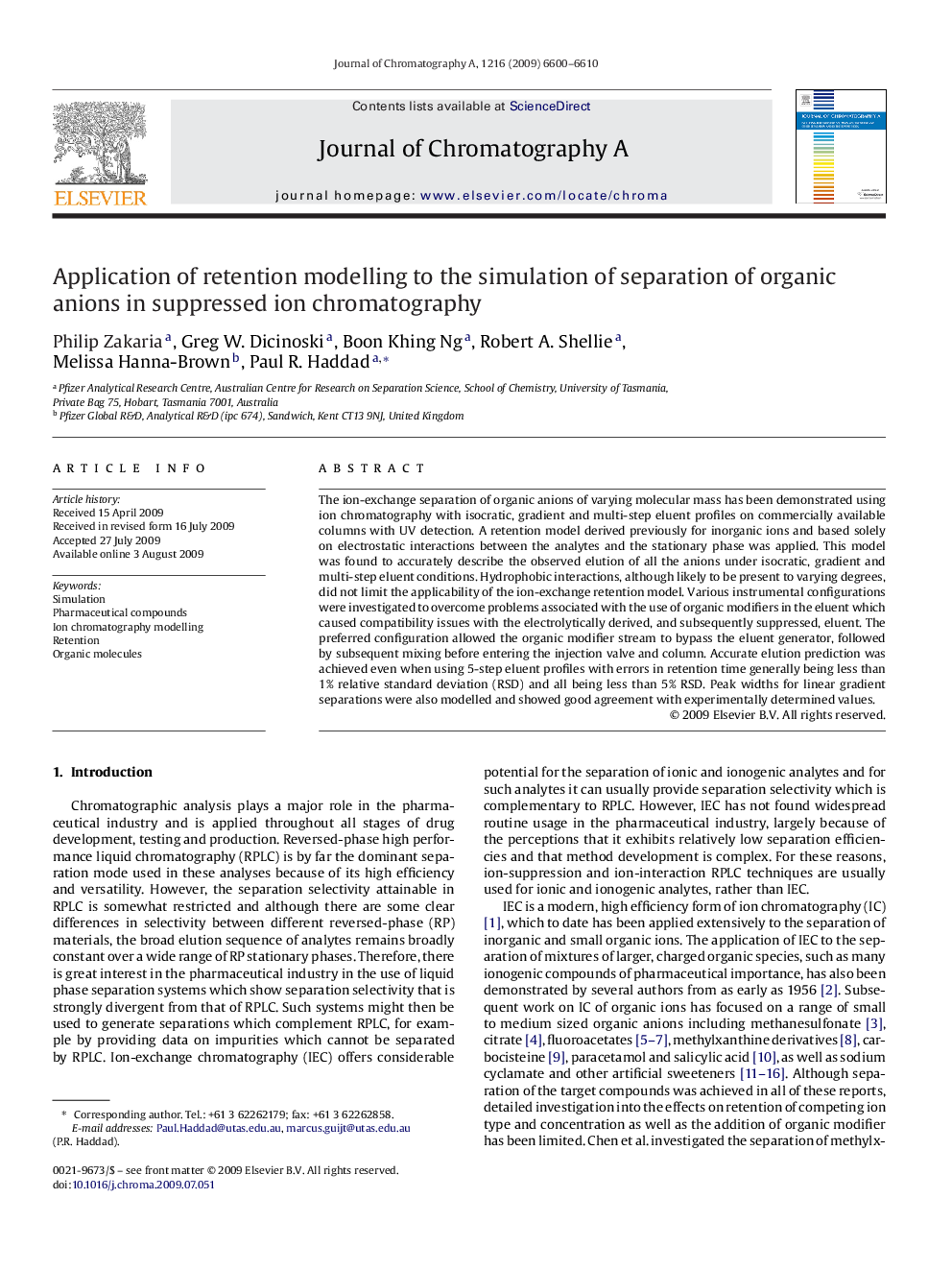| Article ID | Journal | Published Year | Pages | File Type |
|---|---|---|---|---|
| 1210661 | Journal of Chromatography A | 2009 | 11 Pages |
The ion-exchange separation of organic anions of varying molecular mass has been demonstrated using ion chromatography with isocratic, gradient and multi-step eluent profiles on commercially available columns with UV detection. A retention model derived previously for inorganic ions and based solely on electrostatic interactions between the analytes and the stationary phase was applied. This model was found to accurately describe the observed elution of all the anions under isocratic, gradient and multi-step eluent conditions. Hydrophobic interactions, although likely to be present to varying degrees, did not limit the applicability of the ion-exchange retention model. Various instrumental configurations were investigated to overcome problems associated with the use of organic modifiers in the eluent which caused compatibility issues with the electrolytically derived, and subsequently suppressed, eluent. The preferred configuration allowed the organic modifier stream to bypass the eluent generator, followed by subsequent mixing before entering the injection valve and column. Accurate elution prediction was achieved even when using 5-step eluent profiles with errors in retention time generally being less than 1% relative standard deviation (RSD) and all being less than 5% RSD. Peak widths for linear gradient separations were also modelled and showed good agreement with experimentally determined values.
